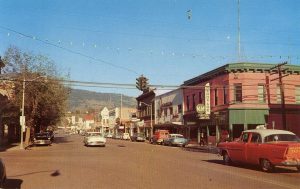
By Cy Lawrence – Melville, Sask.
I was around 13 years old when World War II broke out. Being a farm boy, I was soon pressed into driving a stook team for our area. A stook team was a team of horses that pulled a rack loaded with sheaves of grain to the threshing machine.
I also drove a stook team for the neighbours, helping with their threshing. They had a threshing machine driven by an International Harvester Company (IHC) Titan tractor. I had an interest of anything mechanical and I soon learned how they got their Titan started.
Another neighbour also had a Titan tractor that he never used. We used to get our drinking water from this neighbour’s well. The Titan sat nearby in the vacant yard and every time I fetch water from his well, I would check out his sleeping Titan.
I convinced a couple other farm boys my age to help try and start the resting Titan. We got gas and oil and on the first try it started and ran well. We then decided we should drive it around, so we did. It left some telltale tracks. Uh oh! Now what?
‘I never did fess up’
We knew there would some explaining to do of why we started and drove the Titan without the owner’s (or anybody else’s) permission. We were stewing!
Dad happened to get some water from the well and when he came home, he’s said someone had been driving the Titan around. He thought the owners had been trying to sell it. What a relief for me! I never did fess up to how the tracks had got there.
The Titan had a horizontal engine with two cylinders that ran at about 500 rpm. The pistons travelled unopposed in the same direction, creating a balancing problem. It made things rattle and vibrate. The Titan’s exhaust went ‘bang bang bang bang’.
The Titan had a rated horsepower of 10-20. It had lots of power to drive a 22” grain separator or pull a breaking plow. They weren’t used much for field work, because of the rattling and vibrating. They were mostly used for their belt-driving and on a good day, a 22” separator with four stook teams could thresh about 1000 bushels of wheat, or about 40 acres.



